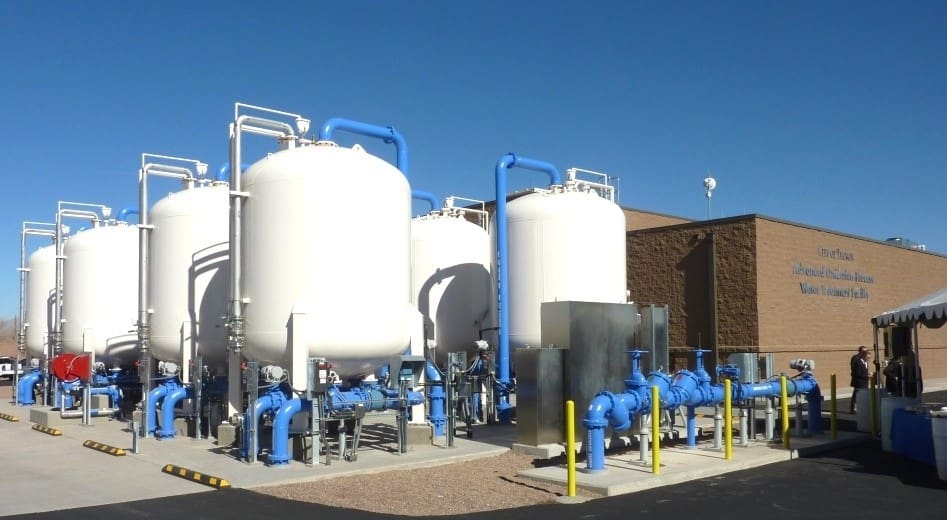The Complete Guide to PFAS Treatment for Environmental Contamination
Your Overview to PFAS Treatment Technologies and Benefits
The frequency of PFAS contamination in water sources necessitates an extensive understanding of readily available treatment technologies. Each innovation not just targets particular PFAS substances but likewise plays a crucial duty in boosting total water high quality and shielding ecological honesty.
Comprehending PFAS Contamination
Recognizing PFAS contamination is important for resolving its pervasive effect on environmental and human health and wellness (m270 pfas treatment). Per- and polyfluoroalkyl compounds (PFAS) are a team of synthetic chemicals commonly used in numerous commercial and consumer items due to their water- and grease-resistant buildings. Commonly discovered in firefighting foams, non-stick cookware, and water-repellent materials, PFAS have actually entered the environment with manufacturing processes, wastewater discharges, and seeping from landfills
When launched, these compounds linger in the environment, resulting in prevalent contamination of dirt and water sources. Their special chemical structure, identified by solid carbon-fluorine bonds, makes them immune to destruction, causing a phenomenon called "forever chemicals." PFAS can gather in the human body and the food chain, possibly triggering damaging health and wellness results, consisting of immune system interruption, developmental issues, and a raised danger of certain cancers cells.
Regulatory firms and health and wellness organizations are increasingly acknowledging the significance of PFAS contamination, triggering initiatives to keep an eye on, analyze, and mitigate its results. Understanding the paths of PFAS contamination is important for notifying public law and creating efficient methods to protect both ecological and human health.
Overview of Therapy Technologies
Various treatment technologies have actually been established to deal with the obstacles posed by PFAS contamination in water and dirt. These innovations can be broadly categorized right into several classifications, each with its special systems and effectiveness in eliminating PFAS substances.
One noticeable technique is ion exchange, which makes use of resin products to catch and remove PFAS from infected water. This technique is specifically reliable for short-chain PFAS and can attain substantial decreases in focus degrees. Another modern technology, advanced oxidation procedures (AOPs), uses solid oxidants and ultraviolet light to damage down PFAS into much less hazardous compounds. AOPs are ideal for dealing with a large range of PFAS compounds but might call for mindful optimization to take full advantage of efficacy.

Turned On Carbon Filtration
Activated carbon purification is a widely used technique for the removal of PFAS from contaminated water, recognized for its ability to adsorb a broad series of organic compounds. This technology employs triggered look at this now carbon, a highly porous product with a considerable surface, which assists in the binding of PFAS particles through physical adsorption. The effectiveness of triggered carbon in getting rid of PFAS is influenced by a number of aspects, consisting of the kind of carbon made use of, the contact time, and the concentration of PFAS in the water.
One of the advantages of turned on carbon filtering is its convenience; it can be applied in different setups, such as granular turned on carbon (GAC) systems or powdered triggered carbon (POLITICAL ACTION COMMITTEE) systems. GAC systems are generally used in larger-scale applications, while PAC can be utilized in smaller or temporary arrangements. In addition, the modern technology is relatively very easy to operate and keep, making it accessible for numerous water treatment centers.

Ion Exchange Solution
Ion exchange systems stand for one more reliable method for the removal of PFAS from contaminated water, matching approaches like turned on carbon filtration. These systems operate on the concept of trading ions in the water with ions hung on a resin product. Ion exchange resins can be especially created to target the negatively billed PFAS compounds, successfully capturing them and enabling cleaner water to go through.
One of the primary advantages of ion exchange systems is their capacity to eliminate a wide variety of PFAS, consisting of both long-chain and short-chain versions. This flexibility makes them ideal for various applications, ranging from community water therapy to industrial processes. Additionally, ion exchange systems can frequently achieve reduced discovery restrictions for PFAS contrasted to a few other treatment methods, thus boosting water top quality.
Nonetheless, it is important to keep an eye on and handle the regrowth of ion exchange media, as the efficiency can decline in time due to navigate to these guys saturation. Appropriate maintenance and replacement of the material are essential for maintaining the system's efficiency. On the whole, ion exchange systems provide a dependable and reliable service for PFAS removal, contributing substantially to risk-free alcohol consumption water requirements and ecological defense.
Advanced Oxidation Processes
Advanced Oxidation Processes (AOPs) utilize effective oxidants to effectively degrade PFAS substances in contaminated water. These ingenious therapy approaches produce highly responsive varieties, such as hydroxyl radicals, that can break down intricate PFAS molecules right into less unsafe byproducts. m270 pfas treatment. AOPs typically employ mixes of ultraviolet (UV) light, ozone, hydrogen peroxide, or Fenton's reagent, boosting the oxidation possibility and boosting deterioration efficiency
The primary benefit of AOPs lies in their capability to target a wide array of PFAS compounds, including both long-chain and short-chain variations. This convenience is crucial, as PFAS contamination typically includes mixes of different substances with differing chemical frameworks. Moreover, AOPs can be incorporated right into existing water treatment systems, making them a practical service for numerous towns and sectors.
However, the application of AOPs can be resource-intensive, calling for cautious consideration of operational prices and energy intake. In addition, while AOPs work in damaging down PFAS, they may not entirely remove all by-products, necessitating more treatment steps - m270 pfas treatment. In general, AOPs stand for a promising opportunity for attending to PFAS contamination, contributing to cleaner water resources and enhanced public wellness protection

Final Thought
By selecting the ideal technology, areas can improve water quality, secure public health, and minimize the environmental risks associated with PFAS see this site direct exposure. Continued research study and implementation of these techniques are important for reliable management of PFAS contamination in impacted areas.